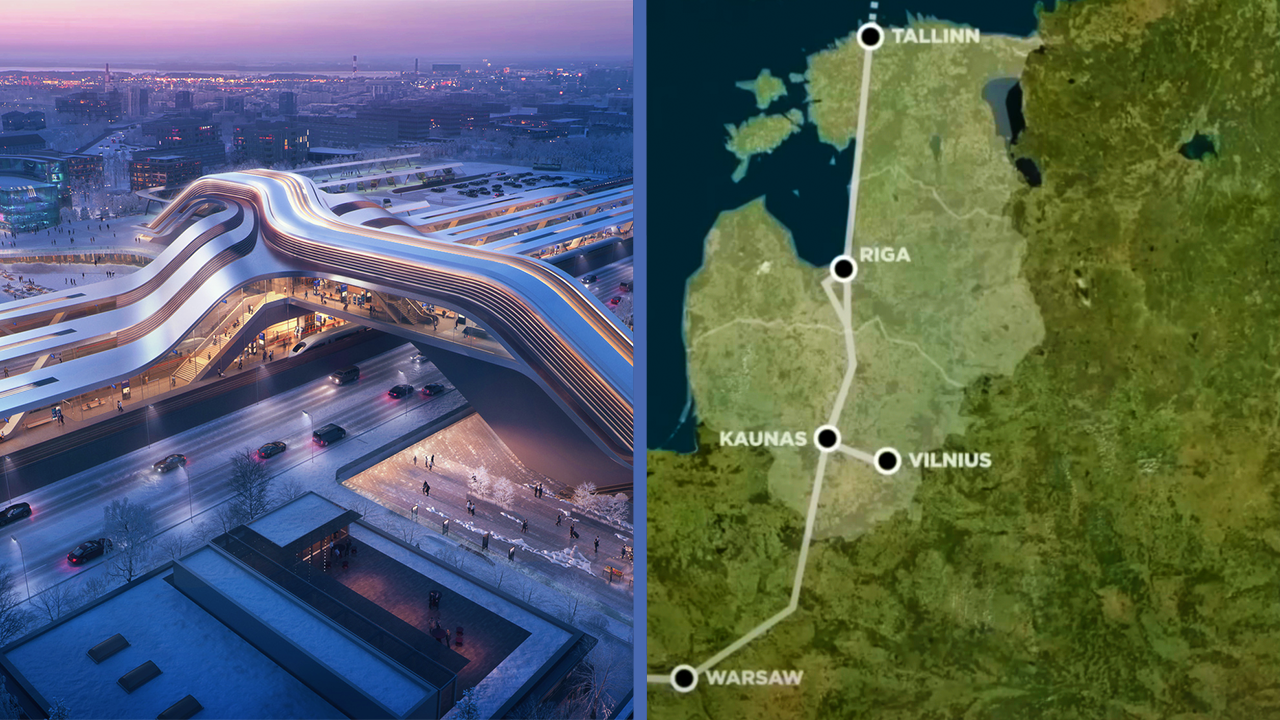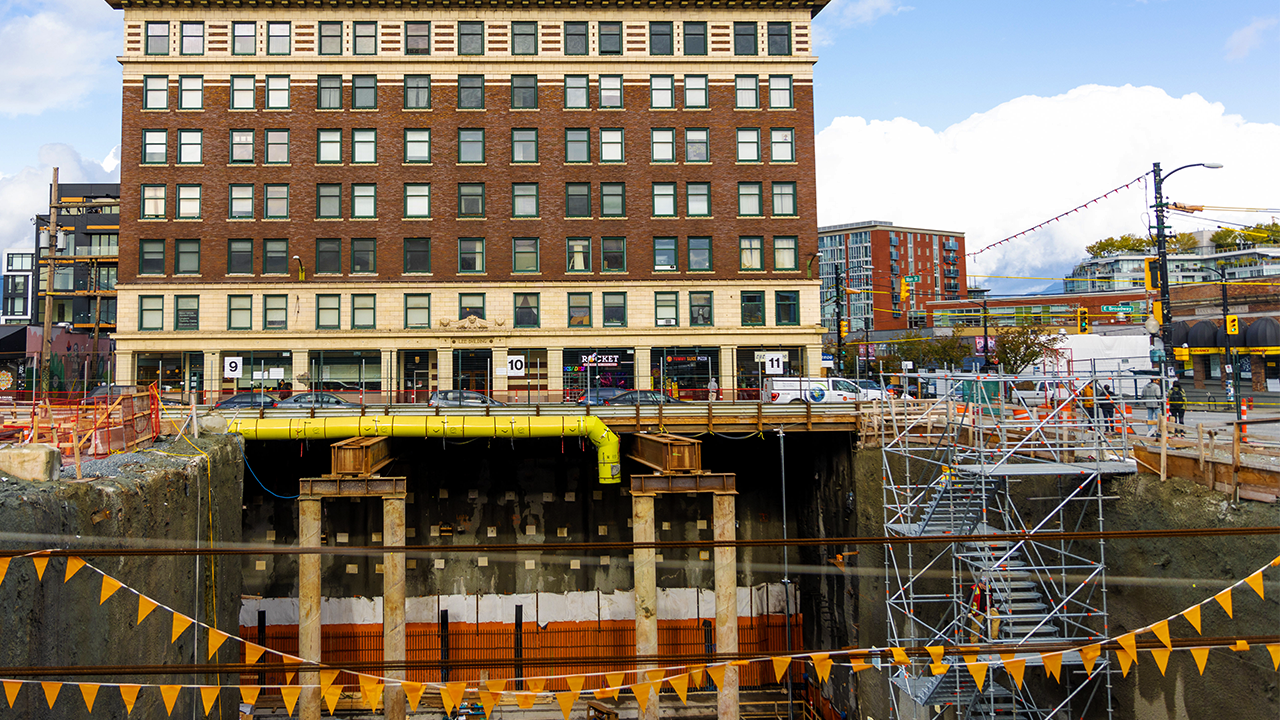The $2.8BN Megaproject Dividing London
- Youtube Views 769,740 VIDEO VIEWS
Video narrated by Fred Mills. This video and article contain paid promotion by Brilliant.
IF you’ve ever been to London, you'll know that the River Thames divides this city in two — north to south.
Many people travel back and forth everyday to get to and from work and move about, but here’s the thing: as London’s population has grown, congestion at crossings has increased and rush hours have gotten ever more hellish.
But there’s help at hand because the city is now building its first new road tunnel under the river on the eastern side for the first time in over 30 years.
Although many activists disagree, it’s hoped that the new Silvertown Tunnel will reduce the amount of time that cars spend idling and polluting the air, and create another option for those trying to cross the river.
However, building a new road tunnel in this city – and at this very wide part of the river – isn’t easy. This is how it's being done.
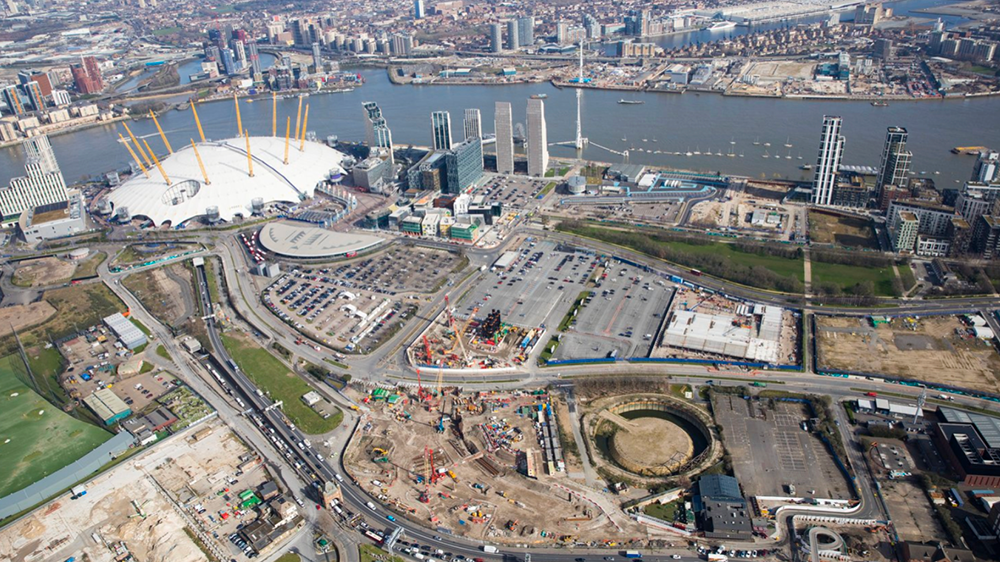
Above: An overview of the construction site in Greenwich. Courtesy of Riverlinx.
Each morning in London’s notorious rush hour, thousands of people trying to drive across the river are funnelled through one of just a few crossings – like the Blackwall Tunnel.
With its narrow design, the tunnel has become increasingly plagued by delays, pollution, and closures. As for public transport, well it’s only large enough for a single-decker bus to go through.
Commuters often find themselves stuck with longer journey times or being forced to take lengthy routes around to get to where they want to go.
And in the event of a closure, there’s really no other way to get across. The next closest tunnel is over 3km away.
London prides itself on its public transport and has worked hard in recent years to discourage car use – but the tube isn’t that helpful if you have no choice but to drive, especially when crossing the river in the east.
And so the Silvertown Tunnel was born — a USD $2.8BN new crossing to relieve the congestion in Blackwall.
The 1.4km route will connect Greenwich to Silvertown under the river and could reduce travel times by 20 minutes. Construction started in 2021 and is on schedule to be completed by 2025.
There will be two parallel tunnels about 1km in length with two lanes of traffic each. In both tunnels, one of these lanes will be designed to carry larger vehicles such as the famous double-decker buses, coaches, and heavy goods trucks.
And while the Silvertown Tunnel won’t be open to pedestrians or cyclists, landscape design around the entrances will include walking routes, new buildings that will house operations, and footbridges.
Now as our regular viewers will know, adding new infrastructure into a live city comes with its challenges. Here’s how London is pulling it off.
The tunnelling method
To carve a fresh route under the river, workers are calling in the heavyweights.
Enter Jill – an 82-metre, 1,800-tonne beast of a tunnel boring machine (TBM) that’s the biggest of its kind ever used in the UK. Poignantly, she’s named after London’s first woman bus driver.
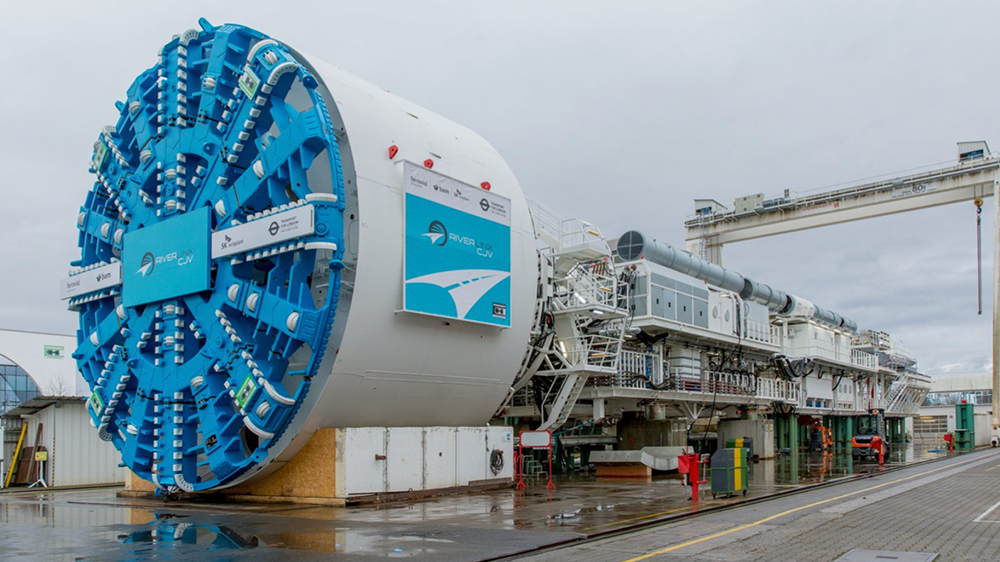
Above: Jill, the Tunnel Boring Machine being used on the project. Courtesy of Riverlinx.
Jill’s first bore went along a route from Newham to Greenwich. Using a large rotating head, the machine pushed and cut through the earth at a rate of about 18-metres a day, creating a wide chamber behind it.
Leftover materials were carried out of the tunnels on a conveyor belt system, then taken away from the site on barges.
As for excavating the small sections around the entrances and into the tunnel itself, workers used a technique called the cut and cover method, which is typically reserved for shallow digs.
Excavation began at the surface by cutting a trench into the soil. Once complete, the dugout area is covered with the tunnel’s walls and roof for support. And the remaining area above it is backfilled and resurfaced.
Now if you remember, the Silvertown Tunnel is being formed of two different tunnel sections. Tunnels with twin-bores like this typically employ two TBMs or dismantle one and then return it to the initial launch point to start the next dig. But that takes time and money.
Instead, workers here simply rotated the entire boring machine 180 degrees so it could just drill back the other way and create the secondary tube — something that’s never been done with a machine of this size before.
To pull off this feat, engineers first designed a large chamber to provide space for the reversal. Section by section, the tunnel boring machine was then placed on 12 nitrogen skates – a set of specialised devices consisting of a hydraulic cylinder and an inflatable cushion.
By pushing in compressed nitrogen into the the bottom of each skate, a pillow of air was created between the machine and the bottom of the shaft.
At this point, the machine was essentially floating. It was then fully rotated in two turns without rubbing against the walls. After all the pieces were reversed, the machine went on to complete the second bore.
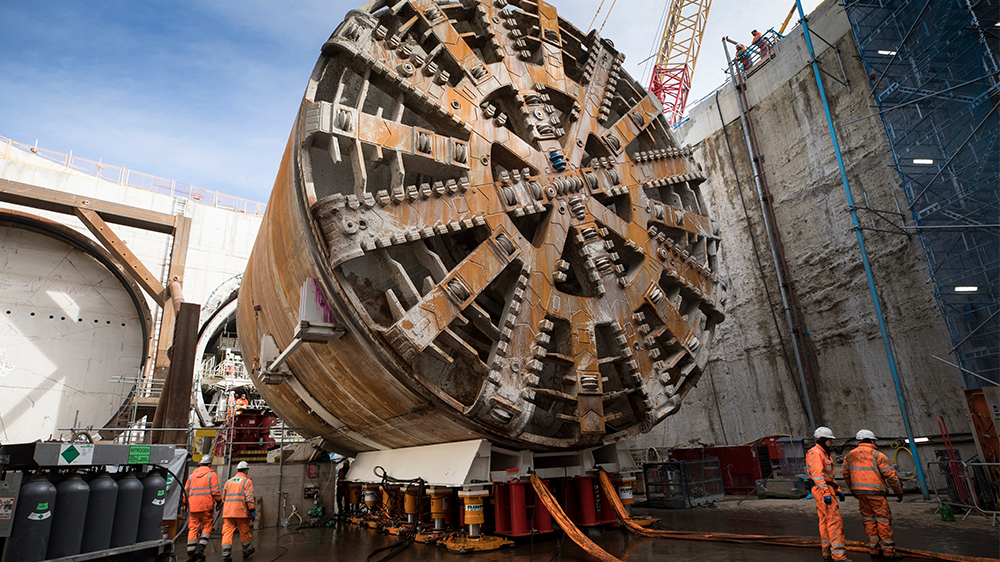
Above: The TBM preparing for the U-turn in the rotation chamber. Courtesy of Riverlinx.
Now that both tunnels are fully excavated, road surfacing and landscaping work is being prepared on either side of the river around the tunnel entrances.
But don’t be fooled into thinking things are easier above ground. In such a congested part of London the team are facing almost every hurdle you can imagine.
London’s cable car goes right across the heart of the Silvertown Tunnel site and it gives you a great vantage point to see all of the activities happening on the site. It also really highlights the constraints this team are facing – from the DLR railway, to the river, live roadways and surrounding communities.
As if one of the world’s most challenging U-turns and a busy city environment weren’t enough, the Silvertown Tunnel has also faced backlash from environmental activists who’ve raised concerns about the additional traffic and emissions the tunnel could bring.
Many have demanded that the tunnel welcome pedestrians and cyclists as well. After all, London has set a goal to become net zero carbon by 2030. But officials argue that the additional tunnel will open up an alternate route for drivers and therefore reduce the number of idling cars in and around Blackwall.
Some aren’t too happy with the introduction of tolls for the use of Silvertown either – the Blackwall Tunnel is currently free.
UK drivers already pay an annual road tax, some parts of central London have a congestion charge and much older vehicles have to pay a fee to enter London’s recently expanded ultra-low emissions or ULEZ zone.
City Hall says that all of these measures help improve air quality for Londoners, manage traffic and reduce the city’s carbon footprint.
Silver lining
The Silvertown Tunnel is testament to the power that infrastructure has to connect our world and get our cities moving.
But it’s also yet another example of how challenging it can be for construction teams to add new infrastructure systems into historic and congested capitals, and the tensions that can come with expanding roadways in an age where enabling more sustainable forms of transport feels more instinctive.
For whatever the debates and challenges, you can’t deny that the feat of construction is awe-inspiring.
Narrated by Fred Mills. Special thanks to Transport for London. Footage and images courtesy of Transport for London, Riverlinx, The Dronalist, Google Earth, and Herrenknecht.
We welcome you sharing our content to inspire others, but please be nice and play by our rules.
